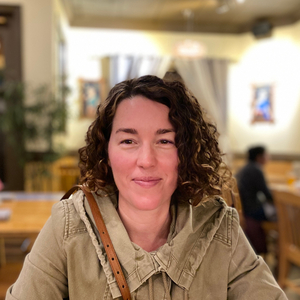What Is Cognitive Processing Therapy?
A significant number of individuals seeking mental health treatment have a history of trauma or post-traumatic stress disorder (PTSD). To meet this need, Eating Recovery Center (ERC) Pathlight trains all mental health providers in Cognitive Processing Therapy (CPT) to ensure that clinical staff are skilled and knowledgeable in providing this highly effective treatment for trauma.
What is Cognitive Processing Therapy?
Cognitive Processing Therapy is one of the leading trauma treatments used today. It is often well tolerated by patients, and can reduce many trauma-related symptoms. Patients with a trauma history that engage in CPT consistently can find many benefits, including:
- Education into how trauma impacts people
- Challenging unhealthy/harmful thought patterns related to the trauma
- Working through issues related to safety, trust, power, control, self-esteem and intimacy
- Processing painful trauma memories
- Working through stuck points
- Developing cognitive skills
- Challenging beliefs
How effective is Cognitive Processing Therapy?
More than 23 controlled trials have demonstrated that CPT is effective in decreasing trauma-related symptoms. “With CPT, the patient doesn’t have to relive and focus on the details of the traumatic event,” says Kim Anderson, PhD, CEDS, Executive Director at ERC Pathlight. “Instead, we ask them to describe their thoughts or beliefs about the experience. Then we identify what we call ‘stuck points’ that contribute to the perpetuation of trauma reactions.”
To “interrupt” negative thoughts, the therapist will ask a series of Socratic questions. “You’re checking the facts, questioning the evidence, helping the patient look at the experience in different ways so they can find a different meaning in it,” Dr. Anderson says.
What are the benefits of CPT?
Some of the many benefits of CPT include:
- Strong empirical support from the research community
- Structured and time-limited treatment
- Emphasis on cognitive modification
- Grounded in cognitive behavioral therapy (CBT)
- Compatible with other CBT-type therapies
- Can be done with or without written accounts of the trauma
- An active and collaborative format
What symptoms can CPT help with?
CPT can help with many distressing symptoms associated with trauma and PTSD. This includes:
- Avoidance: steering clear of memories, people and locations related to the trauma
- Hyperarousal: physiological reactions, such as concentration or sleep problems or being easily startled
- Intrusive Symptoms: nightmares, flashbacks
- Negative Moods: self-blame, extreme fear, guilt, anxiety
How many sessions of CPT are recommended?
Typically, 12 sessions of CPT are recommended, although 16 sessions are recommended for those with a history of childhood sexual abuse.
How common is trauma?
Trauma is incredibly common. Take a look at the latest statistics.
- 60% of men and 50% of women will experience a trauma at some point.
- 6% of all people will develop post-traumatic stress disorder (PTSD).
- Women are more likely (8%) than men (4%) to have PTSD.
- Women are more likely to have traumatic experiences related to child sexual abuse or sexual assault.
- Men are more likely to experience traumas including accidents, combat, disasters, or witnessing a death/serious injury.[1]
What is trauma-informed care?
Since half of women and most men have trauma histories, the clinicians at ERC Pathlight use a trauma-informed clinical approach with all patients. A trauma-informed care approach consists of:
- Being aware of how trauma has impacted patients
- Knowing how to spot the signs and symptoms of PTSD
- Understanding the difficulties people face following a trauma
- Integrating trauma information in all aspects of our work with patients
- Having an intentional focus to avoid retraumatizing patients in treatment
Effective trauma-informed treatment favors psychotherapies like CPT over solely relying on pharmacotherapy (medications).
Find a clinician trained in CPT
Many individuals are able to recover from trauma with CPT. If you or a loved one are struggling with trauma-related symptoms, please reach out to us directly and we can help you find care.
Set up a free consultation with a member of our team.
The rest of this article explains how mental health professionals can seek CPT training.
Cognitive Processing Therapy Training
When providing therapy to patients showing signs of PTSD, clinicians may use manualized CPT, one of the most effective approaches for treating PTSD[2]. If you are a new therapy practitioner or new to CPT, we encourage you to thoroughly read the manual, take a training or seek supervision/consultation before you begin. Through in-session work, homework and worksheets, your patient will have the opportunity to process their experiences, beliefs and emotions -- reducing strong feelings of distress that are commonly associated with a trauma history. Examples of the types of beliefs addressed with CPT include:
- Safety: Patient avoids people, social gatherings and new experiences because they feel unsafe.
- Trust: Patient is distrustful of others.
- Self-esteem: Patient feels worthless, bad or damaged in some way.
- Power and control: Patient tries to control events, emotions and people, because deep down they want to prevent bad things from happening.
- Intimacy: Patient believes that connecting with others is risky and possibly dangerous.
Along with ensuring competence in applying this new treatment in therapy sessions, we encourage you to work on your own issues and stuck points related to your own trauma history, if any. Additionally, it can be helpful to prepare for each session by reviewing handouts, worksheets and educational materials ahead of time.
Is your patient ready for CPT?
Some providers may worry that a patient may be too unstable to begin trauma therapy. However, we find that most patients are ready to begin and that the benefits of using an evidence-based trauma treatment outweigh the risks. If you see the following signs of readiness, is it likely that CPT is appropriate:
- Your patient is ready and willing to talk about/work on their trauma.
- Your patient has PTSD or symptoms of PTSD.
- You feel ready to begin trauma work with that patient.
However, there are some signs that your patient is NOT ready to work on their trauma. If these signs are present, we would not recommend that you start intensive trauma therapy at this time:
- Patient is in danger of hurting themselves or others.
- Patient has mania or psychosis and is unmedicated.
- Patient has substance use issues requiring detox.
- Patient experiences extreme dissociation.
- Patient lacks motivation for treatment.
If you’re still not sure if you should proceed with trauma treatment, we encourage you to think twice, look at relevant research and review CPT recommendations from the manual. You may also want to consult with trauma experts or a supervisor/colleague.
Signs of complex PTSD-A type of PTSD
As an additional note, we want to mention complex PTSD (C-PTSD), a form of PTSD that occurs following repeated, prolonged trauma. C-PTSD is a diagnosis that may be given to people who have experienced trauma for months or years (war refugees, domestic violence or child abuse survivors, etc.). Note: C-PTSD is not recognized as a distinct diagnosis in the DSM-V.
Both people with PTSD and people with C-PTSD may experience flashbacks, nightmares, avoidance and hypervigilance. But people with C-PTSD are more likely to experience the following symptoms:
- Problems with emotional regulation, particularly anger and feeling hurt
- A negative self-concept, feelings of worthlessness or guilt
- Interpersonal problems, having few close friends or feeling disconnected from others
Some clinicians wonder how to distinguish C-PTSD from borderline personality disorder (BPD), since some of the systems overlap. While people with C-PTSD and BPD may have difficulty controlling their emotions:
- Fear of abandonment is more common with BPD than C-PTSD.
- With C-PTSD, one’s self-concept is consistently negative (feeling helpless, guilty, ashamed or different from everybody else); with BPD, one’s identity tends to shift.
- With BPD, one is more likely to engage with others in a chaotic manner; people with C-PTSD tend to avoid relationship conflict.
- A person with BPD is more likely to self-injure or attempt suicide.
Treating trauma with CPT
With trauma being as common as it is, we encourage all mental health professionals to educate themselves on trauma, PTSD, C-PTSD and the manualized, evidence-based treatments that are most effective for healing trauma. By becoming a competent, trauma-informed therapist, you can help people regain their lives from their traumatic past. To watch someone heal before your eyes is incredibly powerful and we are so grateful to all of you for doing this essential work.
If you are a mental health professional, and are interested in learning how to apply CPT in your own work with patients, you can find a link below to our clinician-led webinar that walks you step by step through the process of getting started with CPT.
View a CPT Video
Get an in-depth look at CPT with ERC Pathlight's continuing education course, “Treating Trauma,” presented by Dr. Kim Anderson and Al Tsai, MD. In the video, Dr. Anderson shows you the basics of getting started with CPT. If you’d like to view this webinar along with many other behavioral health topics, we invite you to learn more about our accredited continuing education program and get free access to our entire continuing education library.
Access Free Online Continuing Education Courses Here
View the CPT Manual for PTSD
Read These Next:
- The Danger of Downplaying Trauma With PTSD
- Healing Childhood Trauma
- Treating Patients With PTSD
- Building Confidence in Treating Trauma
Sources
- PTSD: National Center for PTSD. How Common Is PTSD in Adults? Accessed July 19, 2022
- PTSD: National Center for PTSD. Cognitive Processing Therapy (CPT) for PTSD. Accessed July 19, 2022
At Eating Recovery Center and Pathlight Mood & Anxiety Center, we’re dedicated to making your experience - and your clients’ - with us as streamlined, helpful and accessible as possible by connecting and sharing resources for eating, mood, anxiety and trauma-related conditions.
Have any questions? There are multiple ways to reach us via email, social media channels, newsletters and more.
Struggling with an eating disorder?
One conversation can make all the difference. Connect with us today.
Get Help NowConnect With Us


